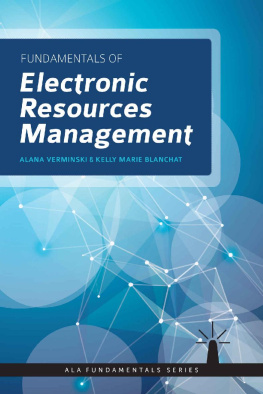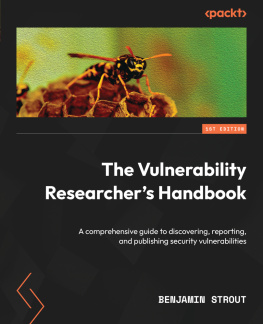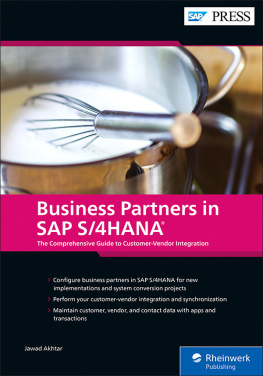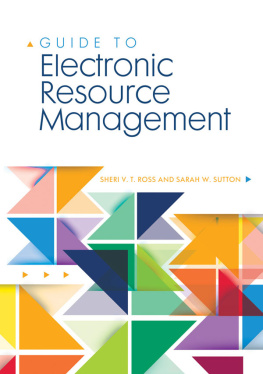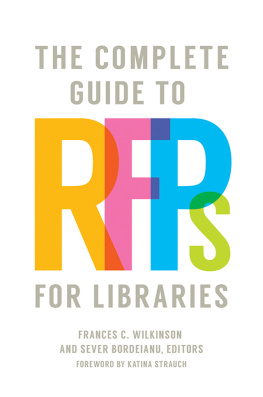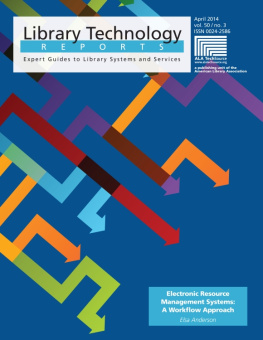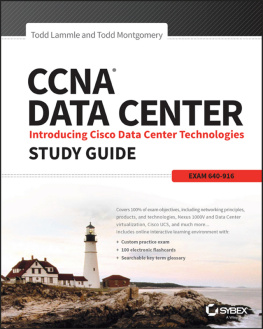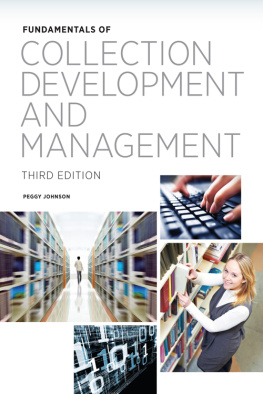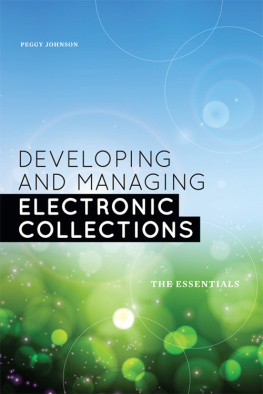ALA FUNDAMENTALS SERIES
F UNDAMENTALS OF T ECHNICAL S ERVICES
by John Sandstrom and Liz Miller
F UNDAMENTALS FOR THE A CADEMIC L IAISON
by Richard Moniz, Jo Henry, and Joe Eshleman
F UNDAMENTALS OF C HILDRENS S ERVICES, 2ND ED.
by Michael Sullivan
F UNDAMENTALS OF L IBRARY I NSTRUCTION
by Monty L. McAdoo
F UNDAMENTALS OF L IBRARY S UPERVISION, 2ND ED.
by Joan Giesecke and Beth McNeil
F UNDAMENTALS OF M ANAGING R EFERENCE C OLLECTIONS
by Carol A. Singer
F UNDAMENTALS OF R EFERENCE
by Carolyn M. Mulac
F UNDAMENTALS OF T ECHNICAL S ERVICES M ANAGEMENT
by Sheila S. Intner, with Peggy Johnson
S MALL P UBLIC L IBRARY M ANAGEMENT
by Jane Pearlmutter and Paul Nelson
ALANA VERMINSKI is the collection development librarian at the Bailey/Howe Library at the University of Vermont. Her interest in electronic resources management began while working at the St. Marys College of Maryland Library in St. Marys City, Maryland. She holds an MSIS from The University of Texas at Austin.
KELLY MARIE BLANCHAT is the electronic resources support librarian at Yale University Library. Before joining Yale, Kelly worked as the electronic resources librarian at Queens College Libraries at the City University of New York and as an account specialist at Springer Science + Business Media. Kelly earned an MLIS from Long Island University.
2017 by the American Library Association
Extensive effort has gone into ensuring the reliability of the information in this book; however, the publisher makes no warranty, express or implied, with respect to the material contained herein.
ISBN: 978-0-8389-1541-7 (paper)
ISBN: 978-0-8389-1146-4 (ebook)
Library of Congress Cataloging-in-Publication Data
Names: Verminski, Alana, author. | Blanchat, Kelly Marie, author.
Title: Fundamentals of electronic resources management / Alana Verminski, Kelly Marie Blanchat.
Description: Chicago : ALA Neal-Schuman, an imprint of the American Library Association, 2017. | Series: ALA fundamentals series | Includes bibliographical references and index.
Identifiers: LCCN 2016044178 | ISBN 9780838915417 (pbk. : alk. paper)
Subjects: LCSH: LibrariesSpecial collectionsElectronic information resources. | Electronic information resourcesManagement. | Libraries and electronic publishing.
Classification: LCC Z692.C65 V47 2017 | DDC 025.2/84dc23 LC record available at https://lccn.loc.gov/2016044178
Cover design by Alejandra Diaz. Image -strizh-/Shutterstock, Inc.
ALA Neal-Schuman purchases fund advocacy, awareness, and accreditation programs for library professionals worldwide.
Contents
Appendixes
T his book aims to provide both new and seasoned information professionals with a practical foundation for electronic resources management: how it came to be, where it is today, essential tools needed to get the job done, and expectations for the future. You can anticipate an overview of the essential concepts, processes, and concerns associated with electronic resources management.
Electronic resources and their management are dynamic and ever-changing. We encourage you to consult the further readings included at the end of each chapter for historical information and context. For the most up-to-date practices, you can look to sources such as the Journal of Electronic Resources Management, the Electronic Resources in Libraries (ERIL) listserv, and the Electronic Resources and Libraries (ER&L) Conference.
In this book, you will be presented with scenarios that apply to the management of electronic resources. Keep in mind that the relevance of specific workflow processes will depend on the type of library, local mission, institutional goals, and library staffing and structure. Every library is unique, and an important aspect of starting in any new job or field is adapting to local processes and culture. This book aims to set the groundwork for the concepts behind workflows and the interconnection between workflows and systems.
In the world of electronic resources, librarians and their vendors use a plethora of acronyms and jargon. In this book acronyms and jargon are used as they are on the job, because the proper use of terminologyno matter how esotericis essential for successful communication. Some acronyms and jargon may be familiar to readers with a background in library sciencesuch as at the end of the book for additional definitions, context, and related terms. Glossary terms are bold-faced when first used in the text of each chapter.
Finally, if you are reading this book and are new to the library professionwe welcome you! Whether you have decided to pursue electronic resources or simply are exploring the profession more broadly, this book will have something for you. Information and concepts build on each other, especially in the field of electronic resources. With that said, take in the whole book at once, or pick a chapter and skip around. One word of advice, though it may be clich: the best way to eat an elephant is one bite at a time. Expertise comes with time, and masters of any field will tell you the same. We are glad youre here, and dont hesitate to reach out to other information professionals for help, advice, and questions.
Getting Your Feet Wet
A Background in Electronic Resources Management
E lectronic Resources Management (ERM) refers to the processes associated with the acquisition and maintenance of library resources in electronic format. The last two decades have seen increased user expectations for immediate anytime anywhere access to information because of the enhanced availability of information on the Open Web. Libraries are acquiring more and more electronic resources, and as a result there is increasing demand for competent professionals to manage these resources.
Electronic resources involve new and, at times complex, acquisition models. For example, print resources are purchased outright, claimed, processed, and placed on a shelf for patron use, whereas electronic resources have individual license agreements that govern how and when a resource is used, and once processed, they are visible only when discovered through the librarys catalog systems. Electronic resources librarians need to understand some degree of legalesebeyond copyright lawto successfully negotiate license agreements that will allow access for users. Further, electronic resources affect nearly every library department because they are used by nearly every library patron, so it is important that electronic resources librarians translate jargon to public services staff and patrons alike. Therefore, to be successful electronic resources librarians should have excellent communication skills. They need to know not only whom to contact and what to ask, but also how to answer a complex array of questions from other librarians as well as end-users.
Todays electronic resources librarian works in an ever-evolving field, where workflows, tools, and technologies require not only technical know-how, but also creativity and flexibility. Perhaps not surprisingly, the evolving nature of the format requires that electronic resources librarians continually update, revise, and scale their workflows from acquisitions and implementation to access and discovery. As a result, electronic resources have spurred fundamental questions about the future of library collections, such as:
- What is the future of the library without, potentially, a physical collection?
- How do electronic resources serve our patrons needs today?
Next page
